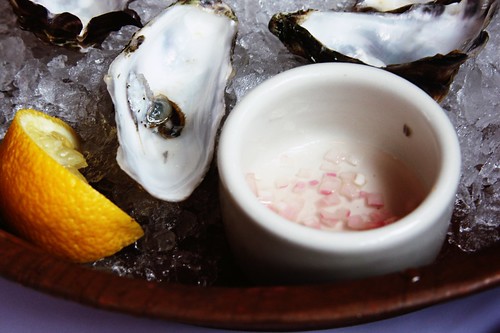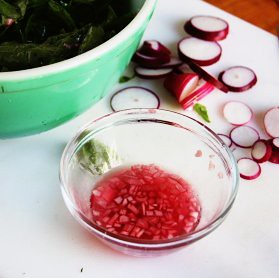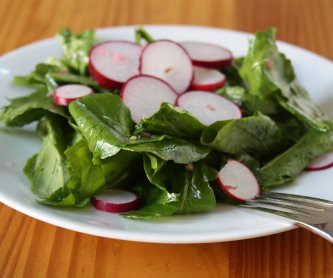Sometimes it’s the smallest lessons that have the power to change every aspect of the way you think. Some people call that life changing moment a “shift”. Oprah branded the concept and named it the “Aha” moment.
If I were an influential branding agent, I think I would find a word to signify the transitional moment in the kitchen when cooking is forever changed by a single lesson. Maybe I’d call it “the cast iron moment”, or maybe I’d go with something quite simple, like “shallots.”
My culinary brain was irrevocably rewired the day I understood shallots. Not long ago, while dining for the first time at the Chez Panisse Café, I found myself marveling at the tiny outbursts of sweet and crunchy acidity hidden between leafy mixed greens. I pulled the plate closer to discover the delicious source of the complex flavors. My charming waiter, Daniel, stepped up to the table as I inspected the perfect, tiny cubes of purple and white hiding underneath the wild arugula on my plate.
“What is that amazing flavor?” I asked him with awe. “Onion?”
Daniel smiled politely. Without a bit of judgment he blew my mind with these three words: “They are shallots.” Well drop a pin in my map of culinary time and mark it “shallots”. My salads and mignonettes have never been the same since.
Pre-Shallots (PS)
Before I truly understood the subtle power of the shallot (the 12th century crusaders called the shallot “valuable treasure”), I mistakenly thought them to be a smaller, more expensive version of the onion. Though shallots may have a similar structure to onions —concentric rings and a papery skin—they are a different species altogether.
Rosetta shallot
Now that comprehend the role shallots play in simple salads and gorgeous mignonettes, I can, so to speak, understand their language. Now whenever I go to the farmers’ market, I’m sure to pick up a couple of tight, heavy shallots (I prefer the smaller ones for their mild flavor and sweetness) for my week’s menu.
At home, I transform the shallots into a pile of tiny, mignonette squares, drizzle them with red wine vinegar, cover the stuff, and leave the precious mix in the refrigerator. Having this shallot mise-en-place on hand saves time and creates the most incredible salads in just seconds.
Shallots can be found year round, but the prime time for them is from April through August. When choosing shallots, look for firm ones that are heavy for their size. Avoid shallots with soft spots or are sprouting.
One of the best parts about learning basic technique, is that you don’t need to have recipes. Salad making is one of the best places to learn how to create by feel and with your taste buds. Allow this to be a simple guide.
Two big handfuls of greens (washed and dried)
2-3 fresh radish (or another lovely market vegetable), thinly sliced
great olive oil like Oleificio Chianti extra virgin olive oil (Alice Water’s olive oil of choice)
Salt
Pepper
1 shallot, cubed uniformly
good red wine vinegarToss the cubed shallot into a small bowl and drizzle with red wine vinegar. Let sit for at least 15-20 minutes. Fill a salad bowl with enough mixed greens for the number of people you are serving. Season with salt and pepper. Drizzle lightly with olive oil. Gently toss with clean hands. Take a generous pinch of the wine soaked shallots and add to salad. Toss and taste for balance. Drizzle more vinegar if needed. Add some of the sliced radish and toss again. Taste and then plate the salad onto cold plates. Add the final amounts of radish to the plate for color and serve.



